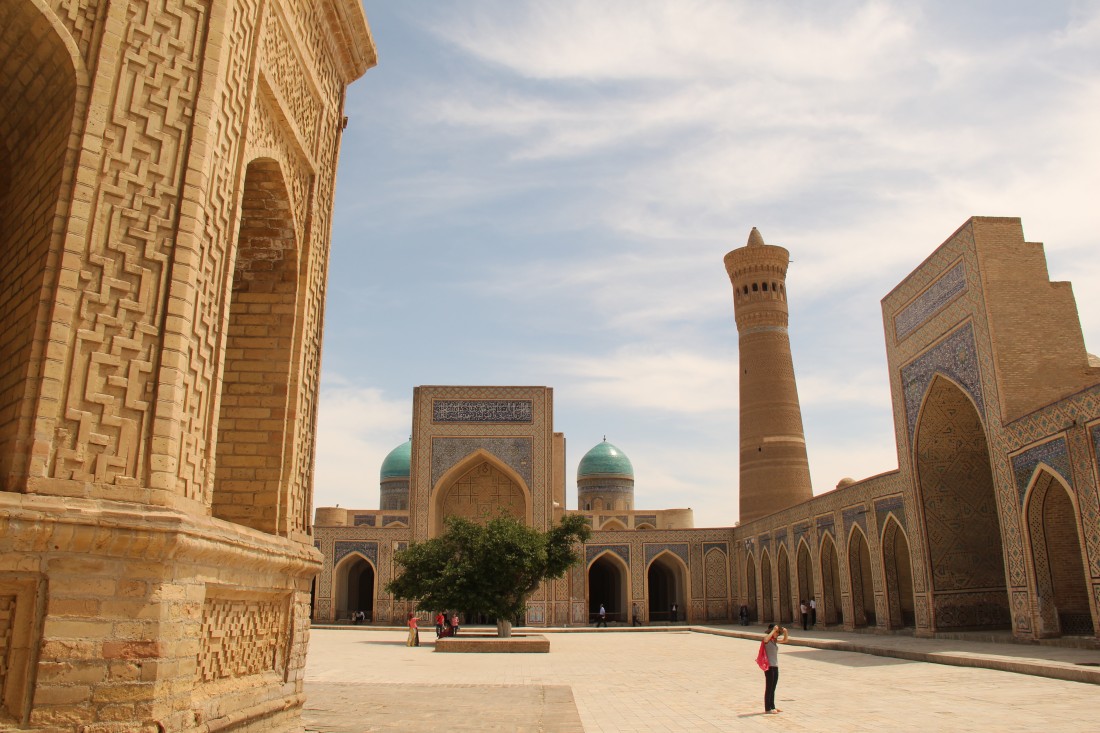🏛️ Poi Kalon: The Monumental Heart of Bukhara
A majestic Islamic architectural complex that dominates the historic center of the city.

📍 What is the Poi Kalon Complex?
The architectural ensemble Poi Kalon, meaning “At the Foot of the Great” in Uzbek, is one of the most iconic symbols of Bukhara. It consists of three key buildings: the Kalon Mosque, the Kalon Minaret, and the Miri Arab Madrasa.
🕌 The Kalon Minaret
Built in 1127 by the order of the Karakhanid ruler Arslan-Khan, this minaret stands 46.5 meters tall and has witnessed centuries of history. Inside, a spiral staircase with over 100 steps leads to the top.
According to local legends, it was once used for punishing unfaithful women. Today, visitors can climb to the top and enjoy one of the most breathtaking views in Bukhara.
🕌 The Grand Kalon Mosque
The current mosque was built in 1514 under the reign of Ubaydullah Khan. It is the second largest mosque in the country after Bibi-Khanum in Samarkand and can accommodate over 10,000 worshippers. Its turquoise dome and mosaic decorations make it a true architectural gem.
📚 The Miri Arab Madrasa
Built between 1535 and 1536, this religious school is dedicated to the influential Yemeni scholar Abdullah. It still functions as an Islamic educational center today. Both Sheikh Abdullah and Ubaydullah Khan are buried inside.
📸 Why You Should Visit Poi Kalon
It's a must-see for any traveler exploring Uzbekistan. Here, you can:
- Visit three historic monuments in one place.
- Climb the minaret and take unique panoramic photos.
- Experience the religious and intellectual soul of ancient Bukhara.
If you want to experience history firsthand, Poi Kalon should definitely be on your itinerary.
